I Fell in Love With a Squatter Camp
UPDATE (March 2017): I wrote this post six years ago, at a time when I was pretty clueless about life in South Africa and how to write about it. I regret the title of the post and the poverty-porn-like tone that much of its prose conveys. But I have a policy of never deleting any of my old posts, so it will stay.
Last Saturday Joe and I went to Diepsloot, a sprawling informal settlement – or squatter camp – on the northern outskirts of Joburg. We went with the Joburg Photowalkers to attend a Mandela Day celebration sponsored by the Diepsloot Arts and Culture Network.
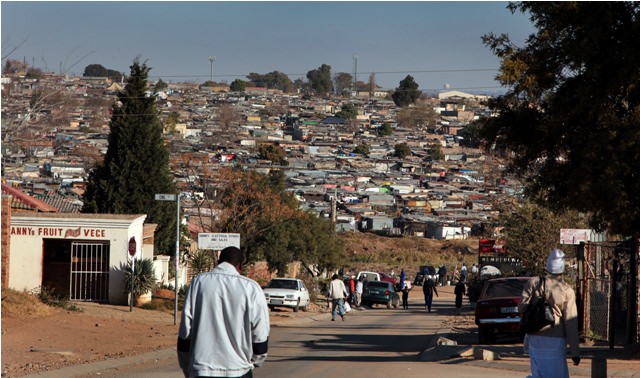
Squatter camps like Diepsloot sprouted up in the mid-1990s, when the apartheid-era townships overflowed with people flocking to South Africa’s cities, and the government began moving those people to empty tracts of land on the cities’ edges. Nearly two decades later, the population is still growing and poverty rages on. Squatter camps, which consist mostly of corrugated iron shacks without running water or electricity, continue to swell. About 200,000 people live in Diepsloot.
One could write a book about life in Diepsloot. (In fact, South African writer Anton Harber has just done that. I intend to read his book as soon as I can get my hands on a copy.) But since I only spent half a day there, I’ll just briefly describe my time in Diepsloot and how I fell in love with it.
I’m having trouble finding the right words to describe Diepsloot. I’ve visited lots of places in Africa: big cities, small towns, suburbs, townships, rural villages. Diepsloot is none of those. It’s not a city, yet it’s densely populated and has everything that big cities have: traffic, restaurants, churches, schools, supermarkets, hair salons, bars, and entertainment. It’s not a rural area, although it sits in the middle of nowhere and has the friendly vibe of a small village. Diepsloot is desperately poor, yet in some ways the residents seem rich.
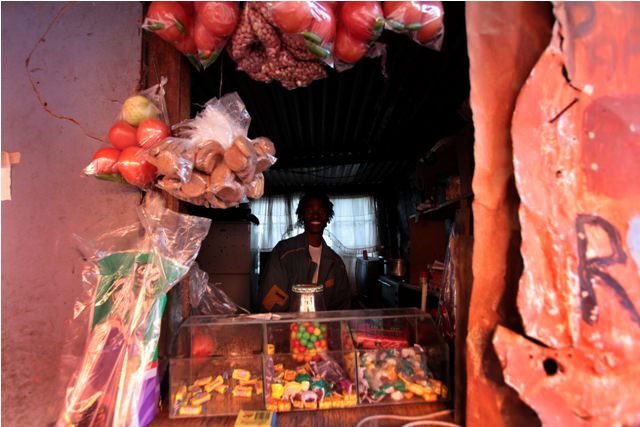
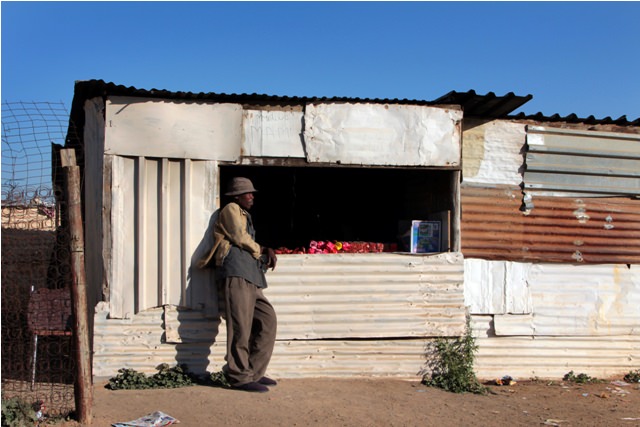
Diepsloot is a vibrant, self-contained society. It might be dingy in places, and services are clearly lacking. And sure, Diepsloot suffers its share of violence and crime (like everywhere else in Joburg). But I got the impression that the people who live there take pride in their home.
We started our afternoon at the Youth Centre, where we caught a couple of Mandela-inspired theatre performances. We then wound our way through Diepsloot’s half-paved, half-dirt streets toward Squatter Camp Park, where a music and dance program was planned.
As a gang of white people wandering through Diepsloot with cameras on a Saturday afternoon, we created quite a stir among the locals. But I didn’t sense any suspicion or anger. Most people were just curious to know why we were there, and really eager to have their photos taken.
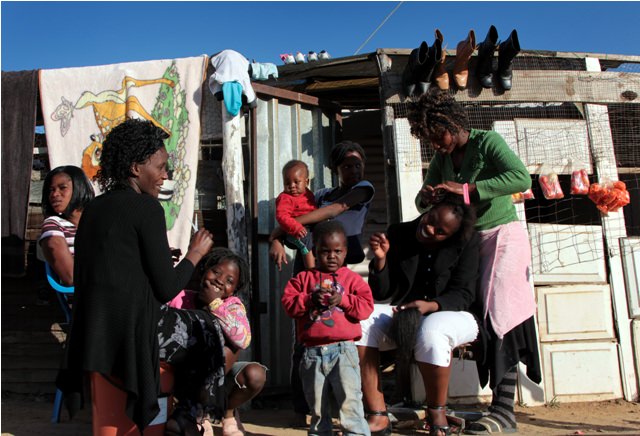
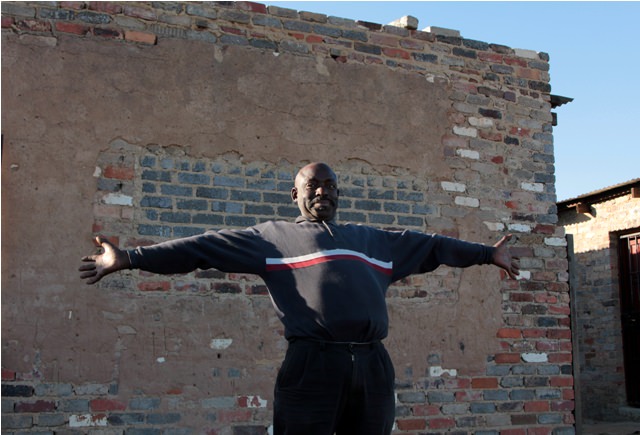
At one point, I was having so much fun that I slipped and nearly fell into a gurgling rivulet of sewage water, dousing myself and one other person. (Sorry, Jane!) I was disgusting and smelly, but I hardly cared. It was around then that I realized I must be in love with Diepsloot.
We reached Squatter Camp Park – a barren dust bowl surrounded by shacks – where we found a lonely DJ spinning tunes and a ragtag band of children playing soccer. It wasn’t the entertainment we expected, but turned out to be more fun than we could have imagined.
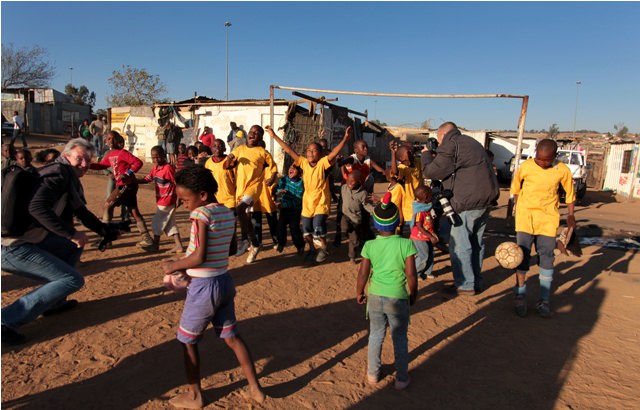
Word spread like wildfire that we were there, and soon the park was teeming with children. They crowded around us, dragging dogs and babies and younger children, yelling “Shoot me! Shoot me!” So we shot.
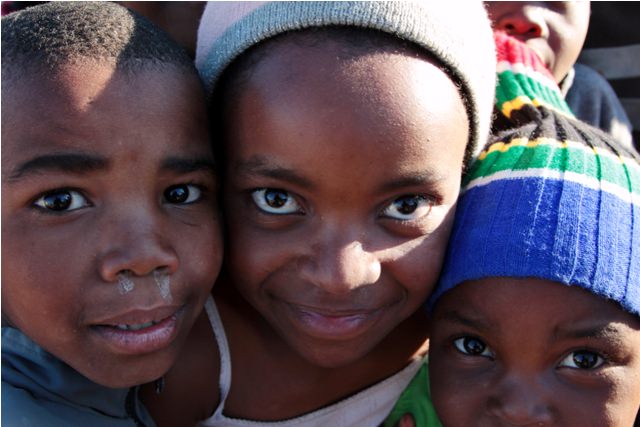
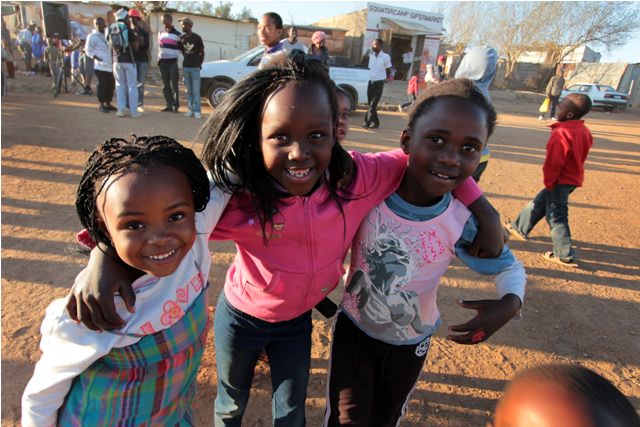
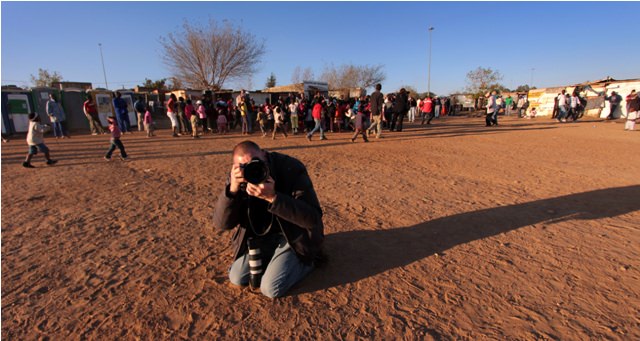
One kid asked me if he could shoot a few pictures himself. I was hesitant, but he was persuasive. I showed him the shutter button and let him snap a few frames, while maintaining a firm grip on the camera myself. Then my new friend turned the camera on me.
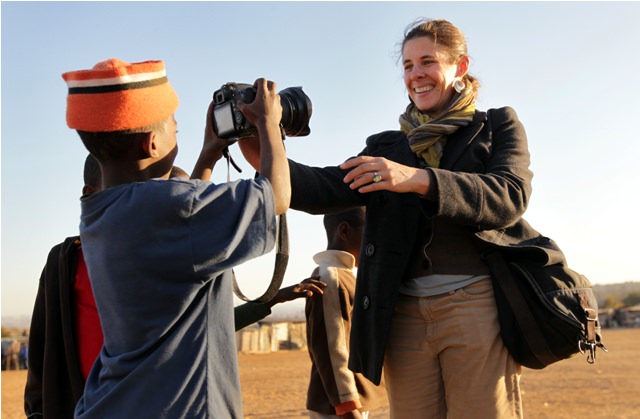
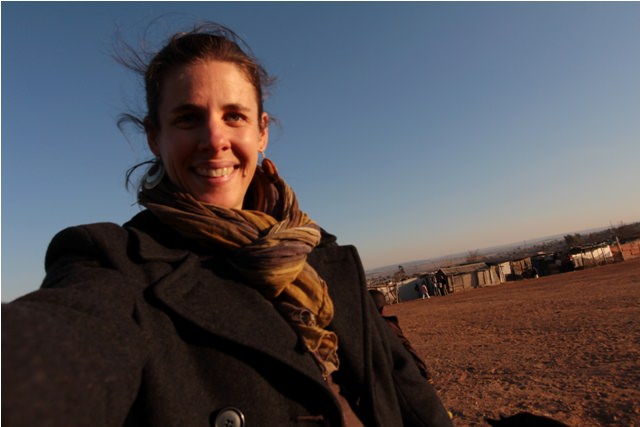
The DJ turned the music up a notch and everyone, photowalkers and children alike, began to dance.
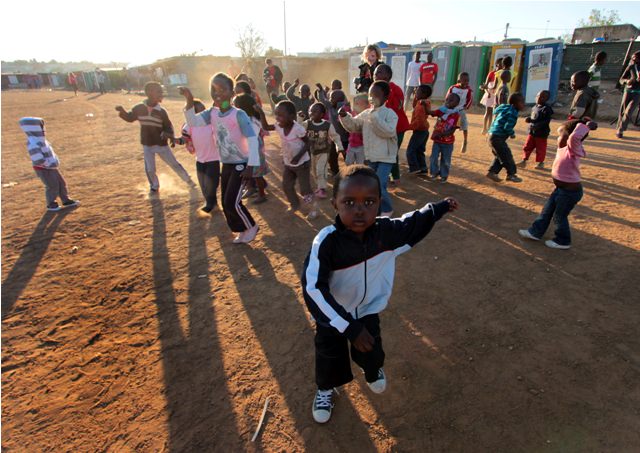
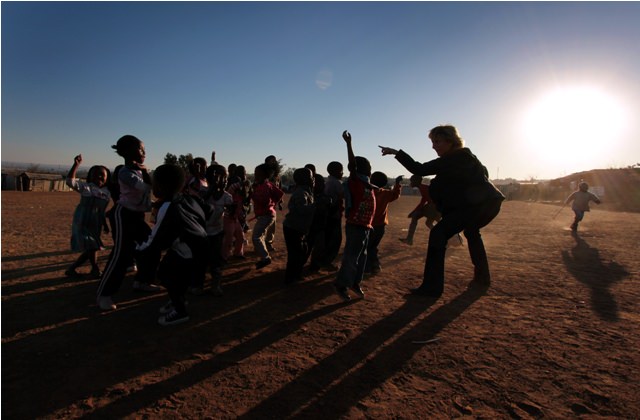
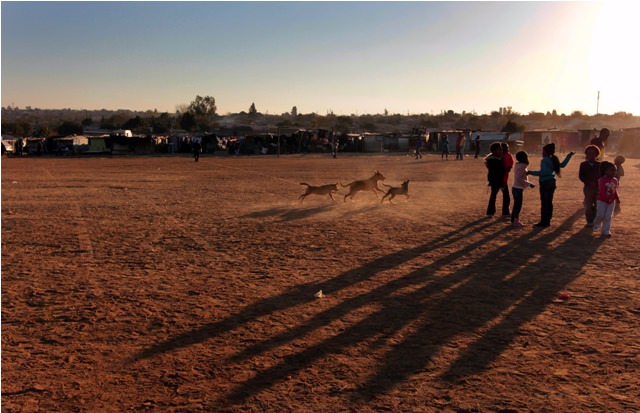
We left Squatter Camp Park a bit before sunset and ambled through the shack-lined alleyways toward our cars, stopping to talk to people and take pictures along the way. Three young men from the Diepsloot Arts and Culture Network – Clement, Philip, and Martin – showed us the way.
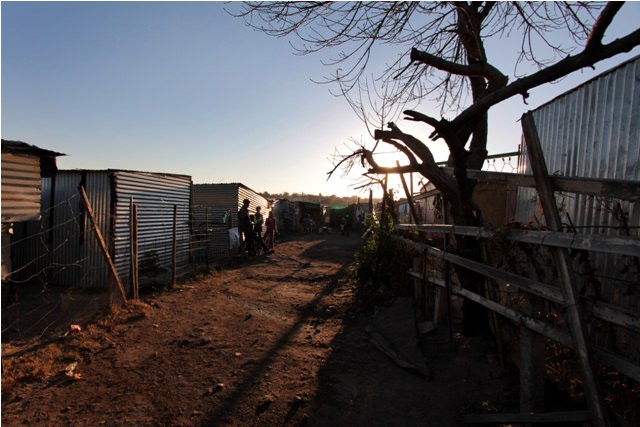
I walked with Clement and we chatted about life. I admired the “I ♥ Diepsloot” T-shirt he was wearing. Clement said that he and his friends produce the shirts, which are available for the reasonable price of R100 ($14). Sold! I love the shirt and I love Diepsloot. And besides, it was Mandela Day weekend.
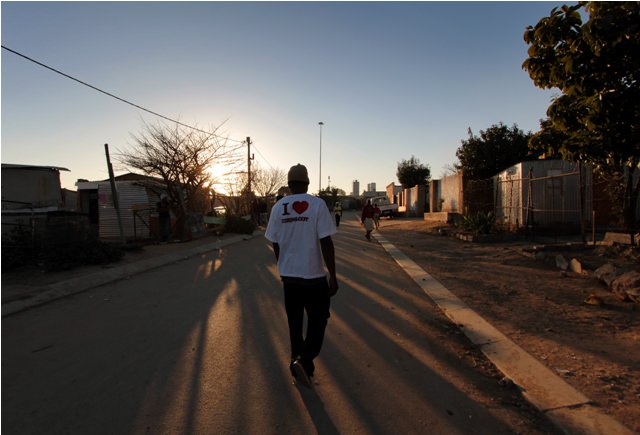
This was one of my top ten experiences since moving to South Africa. And I’m definitely going back to Diepsloot; there are plans in the works for a follow-up Photowalkers visit. Wait for it…
Post-script: Congratulations to Ufrieda Ho, who recently became 2Summers’ 100th Facebook fan. If you haven’t joined us yet, come on over.
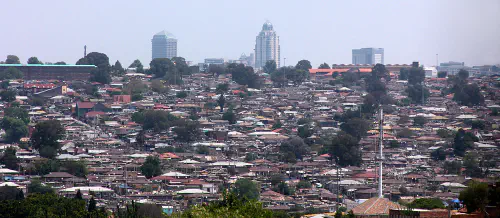
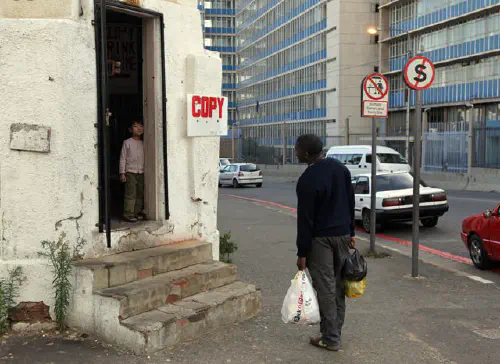
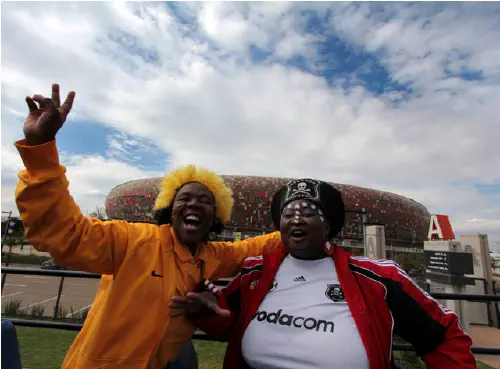

Comments
Loved this post - the more time I spend in places like Diepsloot, the more I realize how rich the lives of the people are who live there. I would rather be a child, barefoot and playing in the dust than a rich kid sitting behind a playstation somehow - so much more laughter and smiley faces.
I know. It seems like a stereotype but I think it’s really true.
This really upsets me due to the ignorance of many people. In Diepsloot there is a rape a week, 45% of these rapes are on children. This is not a rich area of everyone happy playing in sand this is hell for women and children. Too scared to go to the toilet after dark for fear of being attacked. Most are desperately unhappy here, corrupt police, mob violence and lynching, HIV the list is endless. Spending half a day somewhere then brushing over the horrific violence beggars belief it really does. I do wish that people would educate themselves first before writing blogs like this because to live as these people do is actually horrific and not rich at all. Silly silly people commenting otherwise is no help at all.
How incredible!
What you describe reminds me a bit of the slums outside New Delhi. The Indian government removed squatters from prime real estate in the city and moved them to the outskirts of town, where each family got a 15 square meter plot of land on which to live. I did a project there with Habitat for Humanity which is helping families build real homes on some of the sites–an effort to replace the make-shift dwellings in which most folks live. There are more than 50 of these relocation camps outside the city, maybe closer to 100 now.
Great photos! Wish I could have been there!
Kathy
Thanks for showing us the side - inside?- of a place that would most likely never been seen otherwise. Wealth can certainly not be measured in possessions.
My pleasure! This weekend made me realize I need to start telling more stories like this.
Great photos
Thanks Dad. Joe thanks you too.
Now I’m really wishing I had gone with! Love your photo of the dogs and the happy man is hilarious :)
Yeah, it was really fun. Hopefully we’ll be going back soon and you can come with!
so true, people are people everywhere, one does not need a mega home to exist. Kids know that intuitively. We remember best the experiences we share and not ’things’, another truism, but true! Many South Africans are missing out on real South African experiences which is sad, Thansk for telling the stories, Heather. chris
My pleasure, I love telling stories like this. In a way I feel like I need to balance this out though, as i also met children on Saturday who weren’t 100% healthy and didn’t have enough to eat. This is terrible and unfair - every child (and adult, for that matter) deserves to have adequate housing, food, and medical care. But beyond that, I definitely think that less is more. If only we could strike that balance.
I wonder how much you’d love it if you had to live there, though?
You’ve done a great job here of bringing this place alive for your readers.
Tilly, you are 100% right. I was thinking just that as I wrote the comment above. Writing posts like this is so tricky because I don’t want to romanticize poverty, and yet I want to convey the joy that I felt, and that the children and adults I met seemed to be feeling too. Thank you for making this point.
I agree Heather… a wonderful, ironically uplifting day. I am still buzzing, and that’s not just from the dousing! Does that make us s#!t sisters?? lol Love your blog!
Hahahaha. Yes, I think we are. Thanks for reading and for becoming an FB fan :)
I loved reading your post, and enjoyed the photos.
Our domestic worker has recently left Diepsloot to move to Cosmo City. She was without electricity and running water for 3 weeks. She could not bath or cook. She left before it was fixed, so who knows what the current situation is?! It cost her R700 per month to rent a shack, plus R30 a day for taxi fare to get to work. At Cosmo City she rents a room in an RDP house for R500 a month, and she now has water and electricity. It costs her R40 a day for taxi fare. Her salary enables her daughter to study at university so that she can break the cycle.
Our gardener also stays in Diepsloot. He is Zimbabwean. He had to move out during the xenophobic period 2 years’ ago. Every now and again, he moves out for a night for the same reason. He walks to work, because he would rather save the taxi fare. When it pours with rain, he can not come to work if the water swells so much that he can not walk across.
Don’t get me wrong - I think you SHOULD fall in love with Diepsloot. There is an intensity of life here that can’t be found in the Western world. And here you can make a difference.
Celia, thanks so much for your comment. It provides a lot of great context. Our gardener/domestic magician, Lucky, has a sister living in Diepsloot and he spends a lot of time there. Our visit this week has sparked lots of great conversations with Lucky. I’m really looking forward to visiting Diepsloot again and learning more about life there – both the good and the bad.
Thanks for the post and photos….I love the ones with the dogs in it and the ones of the kids. Wish I could have been there- let me know when the next time is. Your post reminded me of how I felt in Soweto. There was a sense of pride and community in parts of it that I don’t feel in other neighborhoods. Of course, not all the parts were beautiful and joyful. There is always an underbelly, everywhere.
Thanks Nina, glad you enjoyed the post. You have to come next time!
What a great story, and great pictures. I think you should send it in to a newspaper in the U.S. somewhere, it’s just a very good article. I bet you it’s not that easy to send a journalist to find that kind of a story. Like “the dogs were dancing too.”
PS: Let me know next time you go there with the photowalkers, would love to come. I was there to help our school dedicated a library and couldn’t get enough pictures of smiley faces, such cute kids. You inspired me to write a post about that visit…
Thanks so much, Sine! That’s actually not a bad idea. Especially because we might be going back to Diepsloot soon. I agree that it could make a good story. I’ll let you know once plans are in place for a return visit. I’m sure Bing will want to come too :)
A beautiful post Heather. Great to see you again. As always, I love the warmth of the people I meet in areas that I would not normally frequent. I find that photowalking is breaking down the barriers of my own mind. Though I have lived in Africa my entire life, run around in the dirt as a child, and revelled in the open spaces that epitomise this ‘wild’ land, it is only now that I am experiencing the melting pot that we call home. I am always struck by the sterility of our middle-class lives, in the absence of exposure to what it means to be part of a community. We network, we don’t communicate, in the modern world. And our suburbs and acquisition orientated lifestyles seem bereft of vibrancy and meaning. I certainly don’t have the answers to the poverty, health and wealth-gap that exists … but I do know that I am the richer for my time with the people of Diepsloot.
Thanks Darren, beautiful comment.
Looks amazing, wish I could have joined in!
Another amazing post.
I think the thing that most moved me was the seeing the smiling children running toward you crying “Shoot me!” Loved “even the dogs danced”!
Thanks Sophia. It was a really fun day and I’m glad that message comes through in the post.
Great post and photographs! Love the one of the three little girls in pink - they look so pretty and full of joy! Hope their futures are bright ones.